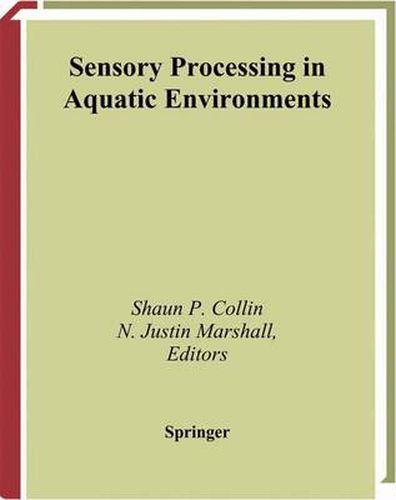Readings Newsletter
Become a Readings Member to make your shopping experience even easier.
Sign in or sign up for free!
You’re not far away from qualifying for FREE standard shipping within Australia
You’ve qualified for FREE standard shipping within Australia
The cart is loading…






Research on sensory processing or the way animals see, hear, smell, taste, feel and electrically and magnetically sense their environment has advanced a great deal over the last fifteen years. This book discusses the most important themes that have emerged from recent research and provides a summary of likely future directions. The book starts with two sections on the detection of sensory signals over long and short ranges by aquatic animals, covering the topics of navigation, communication, and finding food and other localized sources. The next section, the co-evolution of signal and sense, deals with how animals decide whether the source is prey, predator or mate by utilizing receptors that have evolved to take full advantage of the acoustical properties of the signal. Organisms living in the deep-sea environment have also received a lot of recent attention, so the next section deals with visual adaptations to limited light environments where sunlight is replaced by bioluminescence and the visual system has undergone changes to optimize light capture and sensitivity. The last section on central co-ordination of sensory systems covers how signals are processed and filtered for use by the animal. This book will be essential reading for all researchers and graduate students interested in sensory systems.
$9.00 standard shipping within Australia
FREE standard shipping within Australia for orders over $100.00
Express & International shipping calculated at checkout
Research on sensory processing or the way animals see, hear, smell, taste, feel and electrically and magnetically sense their environment has advanced a great deal over the last fifteen years. This book discusses the most important themes that have emerged from recent research and provides a summary of likely future directions. The book starts with two sections on the detection of sensory signals over long and short ranges by aquatic animals, covering the topics of navigation, communication, and finding food and other localized sources. The next section, the co-evolution of signal and sense, deals with how animals decide whether the source is prey, predator or mate by utilizing receptors that have evolved to take full advantage of the acoustical properties of the signal. Organisms living in the deep-sea environment have also received a lot of recent attention, so the next section deals with visual adaptations to limited light environments where sunlight is replaced by bioluminescence and the visual system has undergone changes to optimize light capture and sensitivity. The last section on central co-ordination of sensory systems covers how signals are processed and filtered for use by the animal. This book will be essential reading for all researchers and graduate students interested in sensory systems.